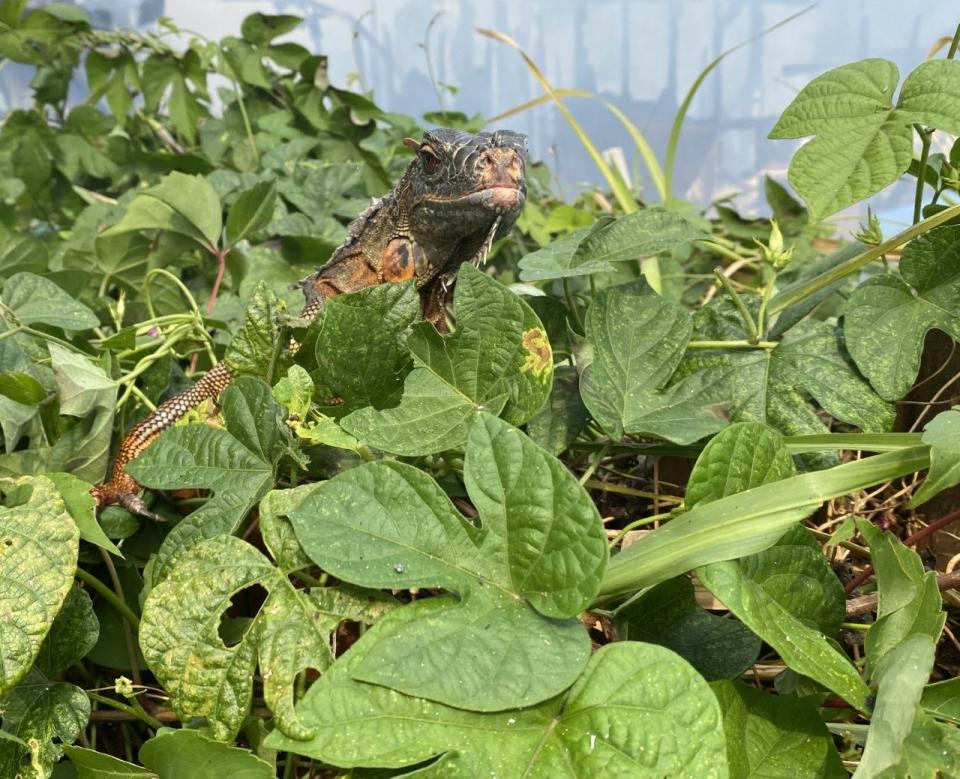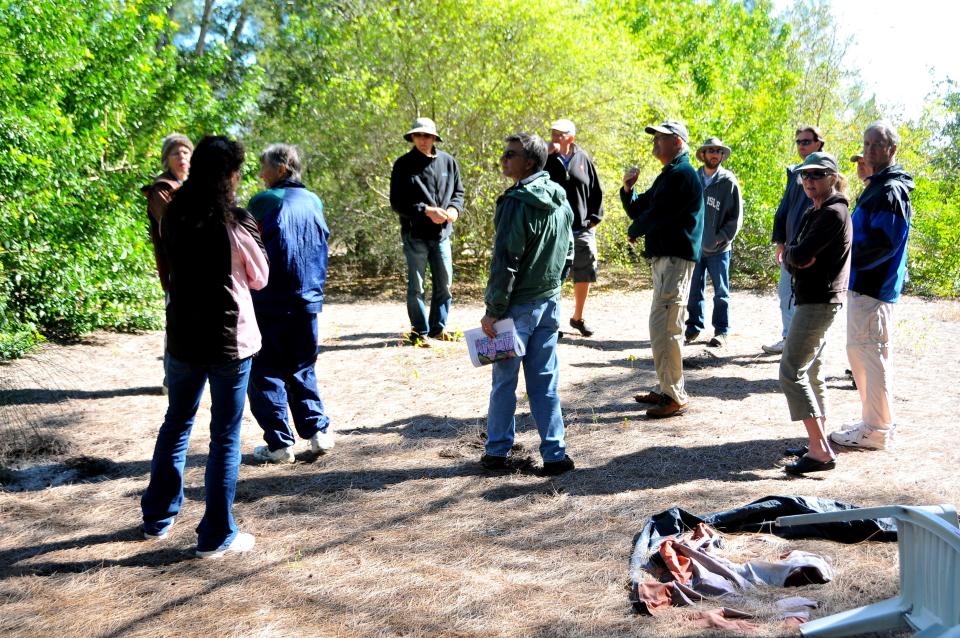Florida's invasions are perpetual war on ecosystems that cost hundreds of millions per year
Have you seen the little piggies, crawling in the dirt? And for all the little piggies, life is getting better — no matter what the Beatles say — always having Florida dirt to play around in.
And they don't care what goes on around them, nor do at least 500 other invasive species in the Sunshine State flinch at dominating Florida native land, akin to how the British Invasion dominated the cultural landscape of the '60s, only now it's more an Asian, Cuban and Austrialian invasion in Florida.
What's happening?
Florida's under perpetual attack from species that don't belong here. Agricultural losses, alone, from invasive species such as citrus canker top $179 million annually. But the toll of feral pigs, free-roaming cats, Cuban tree frogs, lionfish and Florida's other 500 or so known invaders remains uncertain. Meanwhile, the Burmese python keeps slithering its way from South Florida to the Space Coast, with not much in its way.
We trap, saw, poison, plan and spend, but it never seems to be enough to stop the march of invaders. Here are some of Brevard's most notorious foreign species that conservation biologists have warned about for years, along with some newer invaders trying to establish here.
Burmese pythons
While not established yet in Brevard, biologists warn there's no reason they won't one day slither our way, for good. They're nonvenomous but these constrictors can grow to enormous lengths.
On July 10, hunters in Collier captured the largest-recorded Burmese python on record, thought to have recently laid about 100 eggs.
In the Everglades, pythons prey on endangered birds and their eggs, along with frogs and native snakes. FWC encourages the public to remove or report wild pythons when they're spotted. Pythons invaded Florida when snakes that were kept as pets were released or escaped and thrived in Florida's warm and predator-free conditions. For python coping skills, check out FWC's python page here: https://myfwc.com/wildlifehabitats/nonnatives/python/
Feral pigs
Descendants of swine that escaped from Spanish colonialists in the 16th century, feral pigs can have two litters per year with six to eight piglets each, making them a feral force to reckoned with in Florida.
They destroy native vegetation in sensitive wetlands and damage lawns and landscaping. Pigs eat farm crops, livestock feed, young livestock, nesting birds, turtles, tree seeds and saplings. They compete for food with native deer, squirrels and turkeys. They also carry disease and are the main reservoirs in the United States for pseudorabies, a contagious viral disease of swine.
The Florida Fish and Wildlife Conservation Commission (FWC) maintains a website with information about how to deal with feral pigs: https://myfwc.com/wildlifehabitats/profiles/mammals/land/wild-hog/
More:Massive 400-pound hog captured in Palm Bay near school bus stop
Feral cats
Yes. Cats escape and never come back, or people just dump their cat when they can no long care for them.
Government does it, too. Releasing cats in the wild is a primary way the Brevard County Sheriff's public animal shelter reaches the 90% threshold for “no-kill” status since the sheriff’s office began the practice in March 2016. Since beginning the practice of "return to field" of unadopted cats near where they were found, the shelter has set loose thousands of cats to fend for themselves, on average about 68 cats per month, shelter data shows. Many are released in less than five days, so don't get much of a chance of being adopted. Some animal advocates and wildlife biologists see that as a slow death sentence, or worse than euthanasia, for cats and their prey, which includes threatened Florida scrub jays and other native birds.
Some studies show coyotes may be keeping free-roaming cats in check in some areas.
UF has a feral cat site with tips on how to handle free-roaming cats in your yard: https://blogs.ifas.ufl.edu/highlandsco/2018/01/10/cat-in-my-yard/
Cuban tree frogs
Probably brought to Florida in the 1920s as hitchhikers on cargo ships, Cuban tree frogs have become a major pest in south Florida and in Brevard. They prey on Florida's much-smaller native tree frogs and small snakes, and their tadpoles compete with native tadpole species for space and resources.
Iguanas

Green iguanas have been steadily making their way north since they first appeared in the wild in south Florida in the 1960s. The large, spiny lizard can damage structures when it digs burrows beneath foundations. They also poop everywhere. They feed on our plants, but also native snails and bird eggs. Adults can grown more than 5 feet in length and weigh up to 17 pounds.
UF has a nonnative reptile guide website here: https://edis.ifas.ufl.edu/publication/UW336
Trees and plants
At least 130 invasive plant species impact Florida ecosystems, often escaping from yards and costing the state $100 million a year to manage, UF says.
Brazilian pepper, air potato, lantana, the camphor tree, Australian pines and Mexican petunia are chief among the Brevard invaders that biologists most often warn about, especially along roadways, farms and otherwise disturbed lands. But the Australian umbrella tree, also called the octopus tree, or Queensland umbrella tree, also is now running amuck in Brevard, says Sally Scalera, a horticulture agent with UF's Institute of Food and Agricultural Sciences (IFAS) in Brevard.
The umbrella tree is planted in yards but also spread by birds that eat their fruit. The tree starts as a houseplant but when it gets too big is planted in the yard. Learn about the tree here: https://assessment.ifas.ufl.edu/assessments/schefflera-actinophylla/

Lionfish
The lionfish, a voracious omnivore, can eat a dozen fish per day and clears beneficial algae off of coral reefs.
If was first introduced to the western Atlantic Ocean when aquarium owners dumped the fish. Native to the Pacific Ocean, lionfish were first spotted in the Atlantic coast of Florida in the 1980s and have spread through the Caribbean and into the Gulf of Mexico and to the Carolinas.
Nobody knows when lionfish first invaded the Indian River Lagoon, but in 2010, two Florida Tech students spotted several inside Sebastian Inlet. Since then, the fish has been found inside Port Canaveral. They've also been seen in the lagoon around seawalls, pilings and worst of all — mangroves, a key nursery for prized grouper, snapper and other commercial significant species. Hundreds have been found far inland inside Jupiter Inlet.
The green mussel
The Asian green mussel has been popping up on both of Florida's coasts since 2004. They grow in tightly-packed beds and can smother native oyster beds. They can also cause problems with shipping and infrastructure, as the mollusks weigh down buoys, clog intake valves and damage boats. Though green mussels are a food item in Asia, officials warn against eating them in Florida. They most often grow in waters that are polluted or prone to toxic algal blooms.
Fire ants
Known for their painful stings, the red fire ant is a major economic pest in Florida and the rest of the southeast. They're from the grasslands of South America, primarily Brazil and Argentina. Their stings can cause severe allergic reactions humans and animals that can result in sepsis, secondary infections, anaphylactic shock, even death.
Only about 20% of a fire ant colony is foraging at a given time, UF says, so spraying is ineffective and adds excess pesticides to your yard. There are no control methods that will permanently eradicate fire ants but UF has a website that offers up countermeasures.
Or for any invasive species problem, contact Brevard Extension Service at (321) 633-1702.
Contact Waymer at 321-261-5903 or jwaymer@floridatoday.com. Follow him on Twitter @JWayEnviro
This article originally appeared on Florida Today: Florida invasive species inflict multi-millions in damages every year

